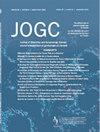Fetal Surveillance in High-Risk Fetal Cardiac Disease: Frequency, Results and Relationship with Survival
IF 2
Q2 OBSTETRICS & GYNECOLOGY
引用次数: 0
Abstract
Objectives
We hypothesized that pregnancies with high-risk fetal heart disease (FHD) would benefit from frequent prenatal surveillance, abnormal fetal surveillance results would be associated with worse outcomes, and cardiovascular profile scoring (CVPS) could identify FHD cases at the highest risk of death.
Methods
A retrospective single-centre study of all actively treated pregnancies with high-risk FHD from 2006–2020. Frequency and results of fetal surveillance, survival, and mode of delivery were collected. Frequent fetal surveillance was defined as ≥ once weekly fetal well-being testing commencing by 280–320 weeks of gestation, or from later diagnosis, until delivery. Where possible, the CVPS was calculated.
Results
Fetal surveillance results were available in 92% (56/61) of pregnancies with high-risk FHD and were abnormal in 18% (10/56). A final CVPS of ≤7 carried a higher mortality (11/21, 52%) than ≥8 (6/31, 19% (P = 0.01)). There was a trend towards worse survival at the last follow-up when fetal surveillance was abnormal versus normal (40%, 4/10 vs. 72%, 33/46, P = 0.07). Survival did not differ between frequent versus infrequent surveillance (13%, 4/30 vs. 3%, 1/31, P = 0.20); nor when comparing abnormal versus normal surveillance results (20%, 2/10 vs. 7%, 3/46, P = 0.21). Where fetal surveillance was abnormal, emergency cesarean delivery was more common (70%, 7/10 vs. 4%, 2/46, P < 0.001).
Conclusions
Abnormal fetal surveillance results and/or a CVPS ≤7 may identify compromised fetuses with high-risk FHD who could benefit from altered management or expedited delivery. Given the high rates of abnormal fetal surveillance in high-risk FHD, frequent fetal surveillance in the third trimester should be considered.
高风险胎儿心脏病的胎儿监护:频率、结果及与存活率的关系。
研究目的我们假设:高危胎儿心脏病(FHD)孕妇将从频繁的产前监测中获益,异常的胎儿监测结果与较差的预后相关,心血管特征评分(CVPS)可识别死亡风险最高的FHD病例:方法:对2006-2020年期间所有积极治疗的高危FHD孕妇进行单中心回顾性研究。研究收集了胎儿监护的频率和结果、存活率以及分娩方式。频繁的胎儿监护是指≥每周一次的胎儿健康检测,检测从孕 28-32 周开始,或从后期诊断开始,直至分娩。在可能的情况下,计算 CVPS:结果:92%(56/61)的高危FHD孕妇获得了胎儿监测结果,18%(10/56)的胎儿监测结果异常。最终 CVPS ≤7 的死亡率(11/21,52%)高于 CVPS ≥8 的死亡率(6/31,19% (P = 0.01))。胎儿监测异常与正常相比,最后一次随访时的存活率呈下降趋势(40%,4/10 vs 72%,33/46,P = 0.07)。经常监测和不经常监测的存活率没有差异(13%,4/30 vs 3%,1/31,P = 0.20);监测结果异常和正常的存活率也没有差异(20%,2/10 vs 7%,3/46,P = 0.21)。在胎儿监护异常的情况下,紧急剖宫产更为常见(70%,7/10 对 4%,2/46,P <0.001):结论:异常的胎儿监护结果和/或CVPS≤7可识别出患有高风险FHD的受损胎儿,这些胎儿可从改变管理或加速分娩中获益。鉴于高危FHD的胎儿监护异常率较高,应考虑在第三孕期频繁进行胎儿监护。
本文章由计算机程序翻译,如有差异,请以英文原文为准。
求助全文
约1分钟内获得全文
求助全文
来源期刊

Journal of obstetrics and gynaecology Canada
OBSTETRICS & GYNECOLOGY-
CiteScore
3.30
自引率
5.60%
发文量
302
审稿时长
32 days
期刊介绍:
Journal of Obstetrics and Gynaecology Canada (JOGC) is Canada"s peer-reviewed journal of obstetrics, gynaecology, and women"s health. Each monthly issue contains original research articles, reviews, case reports, commentaries, and editorials on all aspects of reproductive health. JOGC is the original publication source of evidence-based clinical guidelines, committee opinions, and policy statements that derive from standing or ad hoc committees of the Society of Obstetricians and Gynaecologists of Canada. JOGC is included in the National Library of Medicine"s MEDLINE database, and abstracts from JOGC are accessible on PubMed.
 求助内容:
求助内容: 应助结果提醒方式:
应助结果提醒方式:


